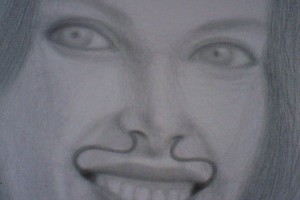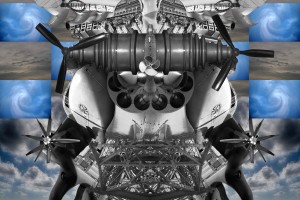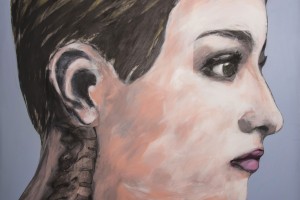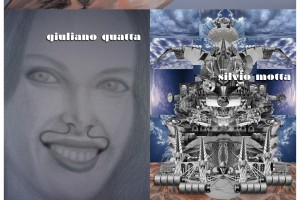BEING HUMAN. HAITSMA’S WAY
Giuliano Guatta, Silvio Motta, Valentino Ungaro
1st – 29th march 2014
Spazio Contemporanea
Corsetto Sant’Agata 22, Brescia (Italy)
Performers
ea – equilibri avanzati Valentina Salerno Fabio Gandossi
Giuliano Guatta / Ginnica del Segno
Photos
Martina Cemin, Federica Pasquali, Sara Vistosi, Renato Criscuolo, Nicolò Lucchi
-
Aknowledgements: for the hospitality Carlo Clerici and Piero Cavellini, for the light design Andrea Gentili and sound design Arianna Ferrari, for the photographic documentation Giovanna Magri and the LABA Photo Deparment
————————————————————————————————————————
BEING HUMAN. HAITSMA’S WAY presentation by Silvia Conta
The question on what is the quid that makes a human being such has crossed the centuries and is still today a fruitful line of research in contemporary art. This reflection is configured, in a kind of tautology enfolding on itself, as one of the characteri- stics of human beings. In this context it is possible to find out one of the traits shared by the research of Giuliano Guatta, Silvio Motta and Valentino Ungaro, with emphasis on the factor of change and the constant transformation that impregnate life. These three artists conceived an exhibition, that within the dialogue outlined by their work, gave the opportunity of enga- ging other artists having very different artistic languages with ad hoc projects and related to the field of theater, dance and performance, in order to expand the kaleidoscopic possibilities of interaction between different kind of researches.
The spirit that united the three artists in the decision of cre- ating a dialogue between poetics and languages has a deep choral substrate, a shared vision made of common affinity re- lating to reality and art: an attitude towards the perception of wonder, an opening to an astonishment that reminds the one of childhood for emotion, intensity and freedom, but at the same time can not help but confront the mature and artistic reflection, wedged into the thin, as much as fundamental, rift between absolute freedom, social superstructure and personal reflection.
Guatta, Motta and Ungaro have conceived their exhibition, en- tering a highly significant relationship with the exhibition space, setting up the works so that each artist had his own physical space where to create a perceptual and mental well-characte- rized environment. The rooms next to each other constituted a coherent and cohesive itinerary inviting the viewer to confront both the individual poetics and the whole.
Guatta brought to the exhibition “portraits made with simulta- neously with both hands, and the rhythmic and gradual over- lapping of signs that, thickening in some areas, formed ima- ginary prosthesis on the faces. These modes of execution can be traced back to the Gymnic of the Sign, a discipline whose center is the process originating the trace, the complicated as much as multiple implications of this process, and its systema- tization through movement exercises.” The Gymnic of the Sing was created by Guatta himself who carried its investigation on for years, and offered a demonstration to the public at the end of the exhibition.
Motta instead intervened with large digital assemblages which technique is derived from the method used to construct great sceneries. To each of them were combined specific sound ele- ments, designed to engage the visitor in a multi-sensory di- mension. Motta also had a room where numerous drapes were hung. These were imprinted with human silhouettes forming a path on which the viewer was invited to move.
Ungaro instead participated with a series of large portraits, for the most part on paper, born from his practice of fact-finding investigation towards the world and himself, in a constant ela- boration that unfolds over time.
Observing the peculiarities of each of these approaches and the overall effect, it is possible to understand that the exhibition itself carried since its birth an opening to the intersection of different languages.
The choice of artists to work together was born from the com- munion of profound intents, from the conception of art as an ongoing research to be conducted with a deliberately innocent and free eye, from the investigation of authentic modalities, free of superstructures, focused on the exploration of the world and their relationship with it, as well as the element of con- stant transformation. Therefore, the artistic process becomes a constant dimension of the recovery of the authentic human dimension in relation to its initial loss.
This process is expressed in the creative act that underlies the idea of a creative impact generator between a body, a surface and the trace left by this relationship.
In this sense, the decision to involve other artists and similar different approaches as an expansion of an investigation aimed at experimenting, is consistent: Equilibri avanzati, Valentina Salerno and Fabio Gandossi were invited.
Guatta, Motta and Ungaro’s intention was, in fact, to observe and promote the interaction between different artistic forms in order to amplify a dialogue, but also to observe externally from their works, what happens when an explicit relationship with other poetics is established.
This dialogue evolved into a form of semistructured interaction: one of the distinctive features was, in fact, the constant gua- ranteed by the works and their layout which configured stron- gly characterized, permanent spaces and visual pathways com- pared to the invited artists’ interactions, called to deal with already defined situations and to develop a method of dialogue through the specificity of their poetics and interaction.
The result was a real openness to the unexpected, a genuine freedom of interaction and involvement of the public, in a progression not only of a broadening actually placed on an artistic level, but also of a consistent expansion of opportunities for reflection and personal action, not only in an artistic enviroment, but above all as human beings.
————————————————————————————————————————————–
Da un’idea degli artisti, Giuliano Guatta, Silvio Motta e Valentino Ungaro nasce il progetto Being Human. Haitsma’s way: un intreccio di differenti approcci al fare artistico che entreranno in dialogo a Brescia negli spazi di Spazio Contemporanea, dall’1 al 21 marzo, per indagare il tema del “divenire umani” partendo dalla pittura e sconfinando nei territori del teatro e della performance con l’intervento degli artisti “equilibri avanzati”, Fabio Gandossi e Valentina Salerno.
Il cuore della mostra è l’incontro di tre artisti – Giuliano Guatta, Silvio Motta e Valentino Ungaro – e dei rispettivi linguaggi, profondamente diversi, ma accomunati da un sentire comune rispetto all’indagine dell’uomo e del suo corpo spirituale nell’esercizio del “diventare umani” quale prova della trasformazione e del cambiamento.
Parte integrante della mostra è la serie di quattro collaborazioni e interazioni con altrettanti artisti performativi – “equilibri avanzati”(Daniela Visani, Stefano Mazzanti) la cui linea poetica portante è l’indagine sulle relazioni fra i linguaggi artistici fisico-vocale, Fabio Gandossi, attore già presente sulle scene del teatro bresciano e nazionale, con un’ azione teatrale basata sulla vita di Isidoro e i racconti di infanzia di Florenskij, Valentina Salerno, regista teatrale che presenta un’improvvisazione teatrale coinvolgendo attori professionisti e gli studenti di una scuola media di Ome nell’ambito di un laboratorio teatrale-, che si succederanno in galleria nel mese di marzo (venerdì 7, sabato 15, venerdì 21 e sabato 29) con lo scopo di estendere l’indagine oltre la pittura e offrire allo spettatore molteplici modalità di approccio alla tematica del “divenire umani”.
Apertura mostra:
giovedì e venerdì dalle 15,30 alle 19,30
sabato dalle 15,30 alle 21,00
Programma delle performance:
Venerdì 7 marzo, ore 21,00 – “Scoppiare è volare” di e con equilibri avanzati, azione collettiva legata ad un filo
Sabato 15 marzo, ore 21,00 – “L’anima di carne” di e con Valentina Salerno, Performance teatrale
Venerdì 21 marzo, ore 21,00 – “Rimbambino” di e con Fabio Gandossi, azione teatrale
Si ringraziano gli sponsor LABA (Libera Accademia di Belle Arti di Brescia), Las Vegas by Playpark.
Per l’ospitalità si ringraziano il Museo Ken Damy, Carlo Clerici e Piero Cavellini.
________________________________________________________________________________
Fusione fra uomo e macchina. L’arte svela un «ibrido» perfetto
di Giampietro Guiotto- Bresciaoggi 13/03/2014
La collettiva «Being Human. Haitsma’s way» si presenta come una riflessione sull’incerta identità umana nell’età contemporanea e sulle difficoltà del pensiero filosofico ed estetico di alleviarne la tragicità del vivere e la mancanza di senso.
Se alcuni ermeneuti sostengono che l’arte non è più in grado di ottemperare al bisogno di trascendenza, e che la sua funzione di lente di ingrandimento sulla società attuale è solo parziale, mobile e imprecisa, gli artisti Giuliano Guatta, Silvio Motta e Valentino Ungaro credono, invece, che essa sia ancora in grado di mantenere aperto il problema dell’identità probabilista e sfuggente dell’uomo.
IL RICORSO DI MOTTA al mondo del web, dal quale preleva frammenti di immagini per assemblare robot dagli occhi artificiali, pezzi di motore e di architetture, come la Torre Eiffel, dà luogo a ipotetiche visioni di matrice surrealista e futurista, che rivisitano il superpotere della macchina e lo spirito fantascientifico del superuomo tecnologico. L’inquietudine umana, mascherata dall’artista con la realizzazione di possenti mostri, è quella relativa al corpo e ai suoi mutamenti nell’era della clonazione, della ibridazione e della manipolazione scientifica, che portano l’individuo alla metamorfosi fisica e al potenziamento di inedite sensazioni e percezioni. Accanto a questi grandi collage fotografici, che suggeriscono l’ibridazione fantastica tra uomo e macchina, Motta appende, un po’ più in là, garze trasparenti, che trattengono, come grandi sudari, l’ultima parvenza dell’eroe mascherato. I ritratti femminili, tratti da periodici rosa, sono poi riproposti da Guatta attraverso il disegno a matita di protesi segniche, che esasperano la falsità e la teatralità calcolata delle espressioni facciali. L’artista, come un chirurgo plastico, imbalsama sorrisi e sguardi, legati a come il personaggio vuole apparire, mostrandone l’aspetto originario deturpato. La possibilità di modificare l’aspetto fisico, poi, si carica nella pittura espressionista di Ungaro, dai risvolti inconsci e allucinati e vicina al realismo magico. Su un identico e asettico sfondo, l’artista impagina ritratti talmente ravvicinati, che ne escludono la fronte, fino ad evidenziare uno sguardo assente e imbambolato e un’epidermide ricoperta da velature squadrate, che, come cerotti, fanno trasparire l’avvenuto interscambio con parti facciali di altre persone, di differente età e sesso. Accanimenti estetici, protesi di ogni genere e trapianti dell’Io si moltiplicano qui, riconducibili all’avanzato progresso tecnologico che, nel foraggiare il mercato dei desideri, plasma stili di vita e nuove identità, non accettando più intrusioni filosofiche, né teologiche. La riflessione degli artisti è rafforzata, infine, dalle quattro performance di «equilibri avanzati», Valentina Salerno, Fabio Gandossi e Arianna Ferrari, che denunciano l’irriducibile opacità del senso del vivere, che si esplica in un limitato campo di possibilità percettive e intellettive, determinate dall’esperienza del corpo vissuto.
Giuliano Guatta, Silvio Motta e Valentino Ungaro: «Being Human. Haitsma’s way»; Brescia, Spazio Contemporanea (Corsetto Sant’Agata, 22); fino al 29 marzo.



